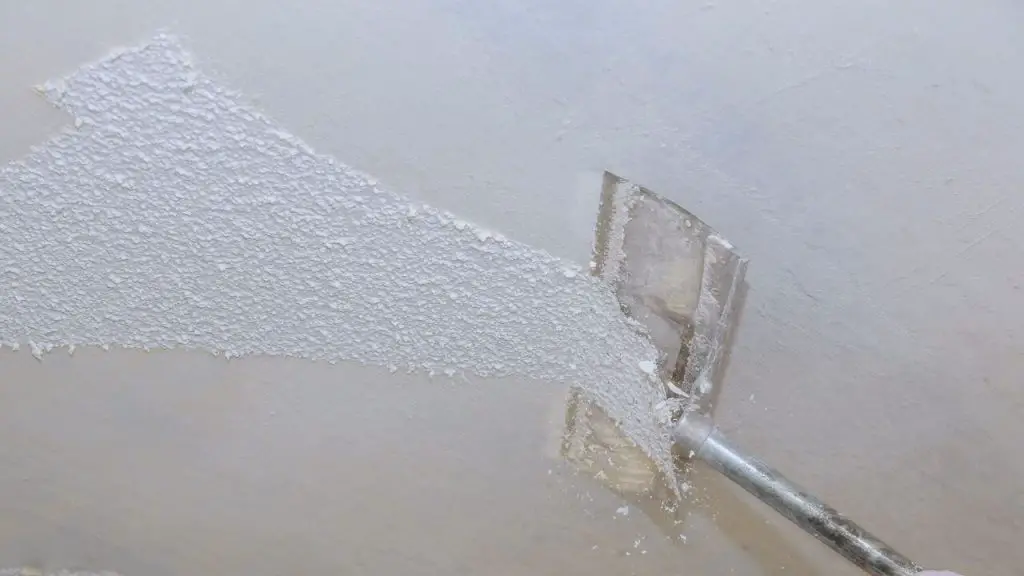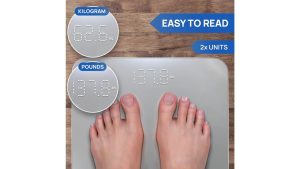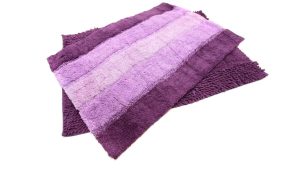To remove wallpaper from drywall, start by scoring the paper and then apply a wallpaper removal solution. Next, gently scrape the wallpaper with a putty knife, careful not to damage the drywall.
Removing wallpaper from drywall can be daunting, but with the right approach, it’s something you can do yourself. Whether renovating your home or simply updating a room’s décor, the process involves a few essential steps: preparation, application of a removal solution, and careful scraping.
Ensuring you have the correct tools and materials beforehand will make the job easier and help avoid damage to your walls. A successful removal requires patience and a gentle hand to ensure the underlying drywall remains intact and ready for whatever new wall treatment you choose. With the following guide, you can tackle this home improvement project confidently.
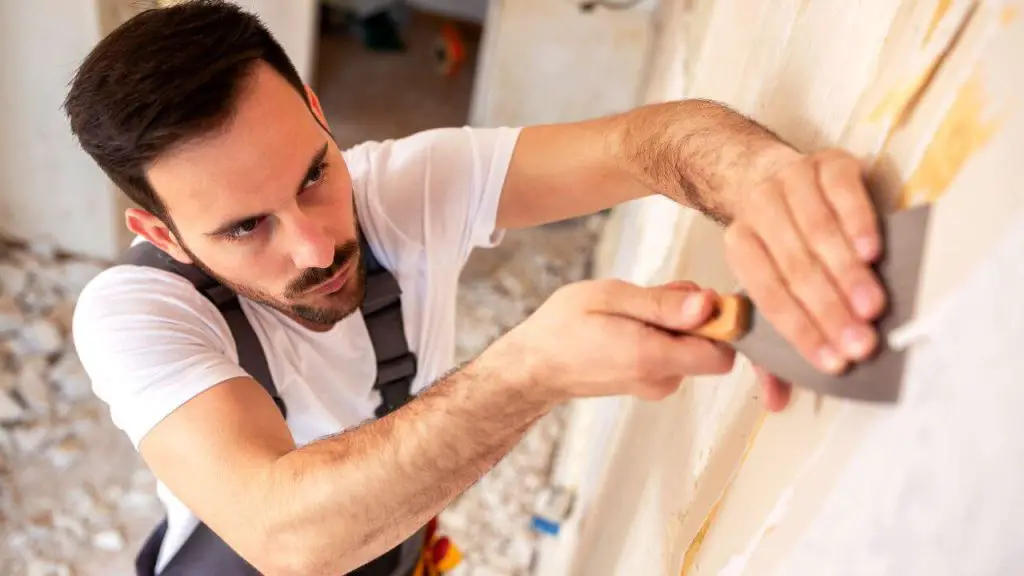
Introduction To Wallpaper Removal
Changing the look of a room often starts with the walls. Old wallpaper can hold a space back, masking its true potential. Removing it breathes new life into your home. However, stripping wallpaper from drywall is only sometimes straightforward. This guide ensures you start on the right foot, equipped with the knowledge to do the job well.
Why Removing Wallpaper Is Necessary
- Update Your Space: Modernize and refresh.
- Damage Repair: Fix tears and peeling corners.
- Prepare for Painting: Ensure a smooth canvas.
The Challenge With Drywall
The drywall is delicate. Improper techniques lead to damage. Understanding the right approach protects the wall’s integrity. This guide provides steps tailored for drywall, ensuring a successful wallpaper removal.
Before You Begin
Introduction to ‘Before You Begin ‘Starting a wallpaper removal project requires preparation. Proper planning helps protect your space and ensures a smooth process. Follow these steps to get ready. Gathering Your Tools
Gathering Your Tools
Equip yourself with the right tools for efficient wallpaper removal. Failing to have the necessary tools can lead to delays and frustration.
- Putty knife or scraper
- Perforation tool
- Wallpaper steamer or solution
- Bucket
- Sponges and rags
- Ladder
- Protective gloves
Protecting the Surrounding Area
Protecting The Surrounding Area
Prevent damage to your floors and furniture. Cover and safeguard all nearby areas before starting your wallpaper removal project.
| Area | Protection Method |
| Floors | Drop cloths or plastic sheeting |
| Furniture | Move away or cover with tarps |
| Trim & Fixtures | Tape edges with painter’s tape |
Determining Wallpaper Type
Know what you’re dealing with before waving goodbye to your dated wallpaper. Identifying your wallpaper type is a crucial first step. It ensures the proper removal method, keeping your drywall safe. Let’s explore how to determine if your wallpaper is peelable or traditional and test its removability.
Peelable Vs. Traditional
There are two main wallpaper types: peelable and traditional.
| Peelable Wallpaper | Traditional Wallpaper |
| The top layer peels off easily | Adhered firmly; requires more effort |
| Backing remains and needs soaking | Must soak or steam to remove both layers |
| Ideal for DIY removal | May need professional tools or assistance |
Test For Removability
- Perform this simple test: Choose an inconspicuous corner.
- Using a putty knife, gently lift the edge of the wallpaper.
- Pull the edge with your hands.
- If the top layer comes away, leaving the backing, it’s peelable.
- If both layers remain intact, it’s traditional wallpaper.
Remember: Test in multiple areas to ensure consistency.
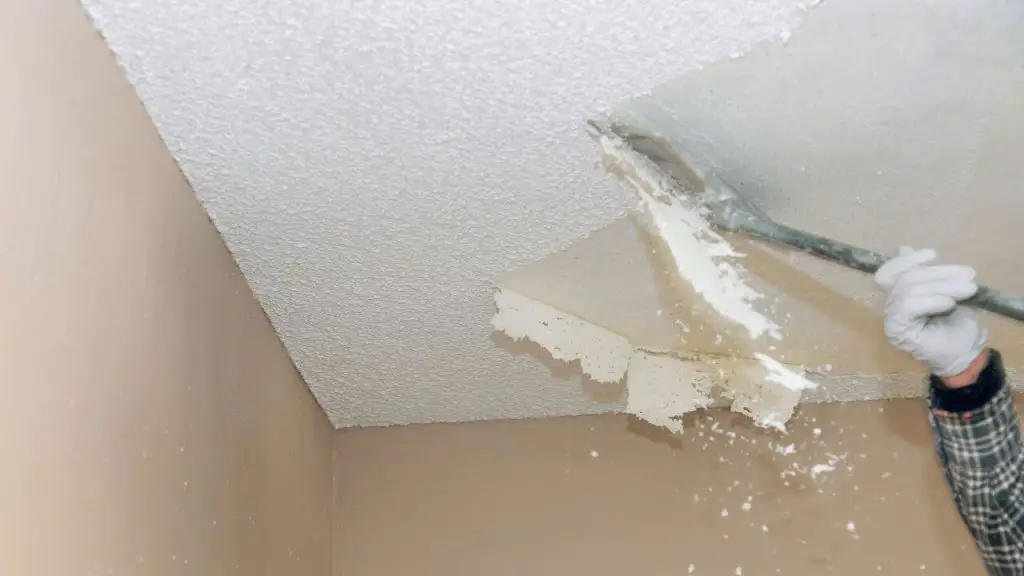
Prepping The Wall
Getting ready to remove wallpaper from drywall is like setting the stage for a smooth performance. Your wall deserves a clean start, free of old decor. Prepping the wall properly can prevent damage and make the job easier. Follow these steps to ensure your drywall is ready for a fresh look.
Score The Wallpaper
Creating tiny punctures in the wallpaper is a critical first step. This helps the stripping solution reach the adhesive beneath. Use a scoring tool with gentle pressure to avoid damaging the drywall. Imagine you are giving the wall a light massage. A pattern of holes across the wallpaper will set the stage for easier removal.
- Move the scorer in a circular motion across the wallpaper.
- Ensure consistent coverage without pressing too hard.
Loosen The Edges
Focus on the edges and seams of the wallpaper. This is where you can start peeling. Use a putty knife or a unique wallpaper removal tool to lift the edges gently. Be patient and careful; rushing can tear the drywall’s outer layer. The initial lift helps with the following stripping process.
- Carefully insert the tool under the wallpaper edge.
- Slowly move it along the seam to separate the paper from the wall.
The Soaking Method
The Soaking Method is an effective way to remove wallpaper from drywall. This technique softens the wallpaper paste, making it easy to strip away the paper without damaging the wall underneath. Perfect for DIY enthusiasts, this approach is both cost-effective and efficient. Let’s dive into the process and learn about the tools and solutions required for this method.
Choosing Your Solution
To commence with the soaking method, selecting a suitable solution is crucial. The market offers a variety of commercial removers, but a homemade mixture can also work wonders. Here’s a breakdown of standard options:
- Commercial Wallpaper Remover: Specifically formulated to break down adhesives.
- Vinegar and Water: A natural and inexpensive alternative.
- Fabric Softener and Water: Fabric softener’s lubricating properties aid in removal.
Tip: Test different solutions to find the best match for your wallpaper and adhesive type.
Applying The Wallpaper Remover
With your chosen solution ready, the next step involves the application process. Here’s what you need to do:
- Prepare the Area: Remove furniture and cover floors with drop cloths.
- Score the Wallpaper: Use a scoring tool to create tiny holes, allowing the solution to penetrate.
- Apply Generously: Use a spray bottle or sponge to soak the wallpaper, starting at the top and working your way down.
- Wait: Allow the solution to sit for several minutes to soften the adhesive.
- Test a Corner: Carefully peel back to check if the wallpaper is ready to remove.
Remember: Patience is key! Allow the solution ample time to work its magic before peeling the paper away.
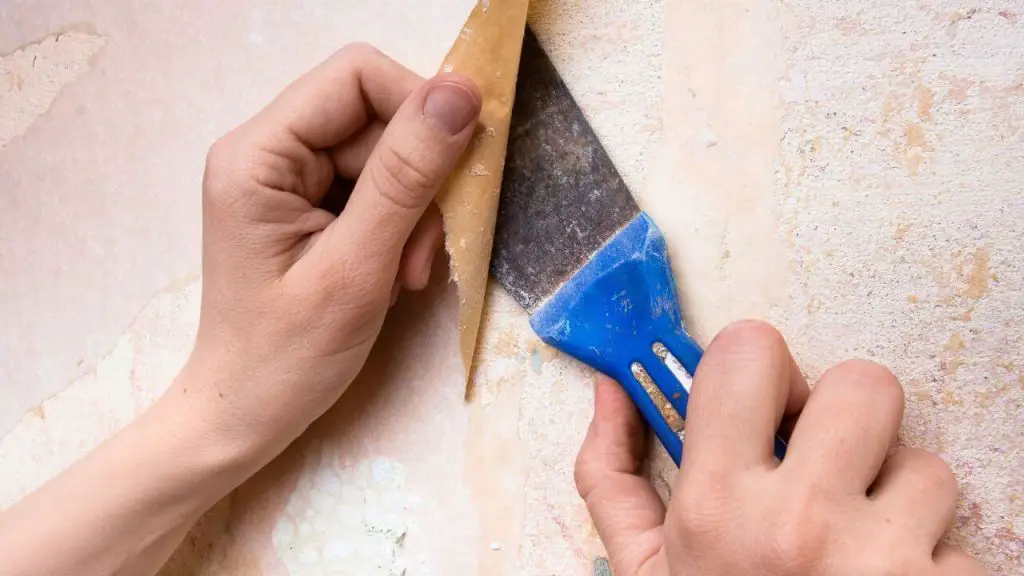
Stripping Techniques
Ready to say goodbye to your dated wallpaper and welcome a fresh new look? Stripping wallpaper can seem daunting, but the proper techniques simplify the process. Here’s how to remove wallpaper from drywall using tools you may already have at home or can easily acquire.
Using A Putty Knife
One of the most effective methods is using a putty knife. This essential tool makes peeling off old wallpaper a breeze. Follow these steps:
- Loosen a corner: Use the putty knife to lift a corner of the wallpaper.
- Peel carefully: Pull the wallpaper away from the wall at a 10-15 degree angle.
- Scrape off residue: Glide the putty knife under the edges to remove stubborn pieces.
Tip: Keep the putty knife at a shallow angle to avoid gouging the drywall.
Steaming Away Wallpaper
Steaming is another fantastic way to lift off wallpaper. A steam machine softens the wallpaper glue, making removal seamless. Use these guidelines:
- Fill the steamer with water and let it heat up.
- Apply the steamer plate to the wall section by section.
- Peel the softened wallpaper starting from the top.
Be sure not to oversaturate areas, as this can damage the drywall.
The Peeling Process
Tackling the project of removing wallpaper can feel daunting. Yet, with the right approach, you can easily peel away those layers. It’s essential to work carefully so you don’t damage the drywall underneath. Getting the knack of the peeling process will make the task smoother and quicker.
Starting From The Corners
Begin at the edges where wallpaper tends to loosen first. Look for the seams or corners to start. Gently use a putty knife to lift the edge. Once you find a good starting point, the rest will follow quickly. Drywall can be delicate, so proceed with caution. If the paper doesn’t lift off easily, you may need more solution to soften the adhesive. Make sure the solution has enough time to work its magic before you attempt peeling again.
Maintaining Even Pulling
Steady, controlled movements are crucial. Aim for a steady pulling pace. Apply even pressure to avoid tearing. If patches stick, stop pulling and reapply your solution on the stubborn areas. To minimize damage, try not to yank or force the paper. Use both hands for a balanced grip and smoothly roll the paper away from the wall. This steady approach helps preserve the integrity of your drywall beneath.
Cleaning Residual Adhesive
Removing wallpaper is a big step towards refreshing a room. After the paper is off, you may notice sticky adhesive that clings to the drywall. Getting rid of this residue requires patience and the proper technique. In the following sections, we’ll explore effective methods to clean off the glue and leave your walls smooth and ready for their subsequent treatment.
Soapy Water Solution
The first approach to tackle adhesive is a simple soapy water solution. It’s gentle on walls and efficient. Here’s a step-by-step guide:
- Fill a bucket with warm water.
- Add a few squirts of dish soap.
- Stir to mix well.
- Soak a sponge in the solution.
- Wring out excess water.
- Gently rub the sponge on the glue spots in a circular motion.
- Allow the solution to sit for a few minutes.
- Scrape gently with a plastic scraper if needed.
- Wipe the area clean with a damp cloth.
Alternatives To Chemical Cleaners
If soapy water does not do the job, try these natural alternatives:
| Method | How to Use |
| Vinegar Solution | Mix equal parts white vinegar and water. Apply with a spray bottle and scrub. |
| Baking Soda Paste | Mix baking soda with water to create a paste. Spread over the glue, let sit, then scrub. |
| Fabric Softener | Add one capful to a bucket of warm water. Apply, let it soak, and then wipe clean. |
Each method should be followed by a thorough rinse with clean water and a soft cloth. Test any solution in a small, inconspicuous area first to ensure it does not damage the drywall.
Wall Surface Inspection
Inspecting the surface of your walls is a critical step before removing wallpaper from drywall. It sets the stage for a smooth removal process. A thorough examination can reveal issues that need addressing before proceeding with your renovation project.
Addressing Wall Damage
Once the wallpaper comes off, you’ll often find unexpected damage to the drywall. Minor dings or holes can be filled with spackling paste. Larger areas may require drywall patches and compound. Always allow repairs to dry thoroughly, then sand them down. This ensures a smooth surface for your next steps, whether painting or applying new wallpaper.
| Type of Damage | Repair Approach |
| Small Holes | Spackling Paste |
| Cracks | Drywall Joint Compound |
| Large Gaps | Drywall Patch Kit |
Prepping For Painting Or Re-wallpapering
The final wall condition plays a vital role in the finished look of your paint or wallpaper. Start with a clean canvas by washing your walls to remove residual adhesive. Use a mild detergent and warm water. If you’re painting, apply a primer to ensure even paint absorption. For new wallpaper, check the wall for smoothness and use a sealer if required to provide an excellent adhesive surface.
- Clean the wall surface
- Repair any damage
- Prime the walls if painting
- Seal for wallpaper application
Tips For Tough Situations
Peeling off wallpaper can leave you scratching your head, especially in tricky spots. Let’s tackle these challenging scenarios with some practical tips.
Dealing With Multiple Layers
Layers upon layers of wallpaper can feel like a fortress on your walls. Start with gentle scoring and soaking. This method allows the solution to penetrate and work its magic. Consider using a steam stripper for a more assertive approach.
- Score the paper using a scoring tool.
- Apply a wallpaper removal solution.
- Let it soak for several minutes.
- Peel away the paper starting from the corners.
Repeat the process if necessary. Use a putty knife to carefully scrape off stubborn patches of paper and glue.
Removing Washable Or Vinyl Wallpapers
Washable or vinyl wallpapers come with shine and resilience. Their waterproof layer can repel water-based solutions, making them hard to remove.
- Score the wallpaper to expose the adhesive beneath.
- Use a mixture of hot water and fabric softener.
- Apply the solution generously with a sponge.
- Allow the solution to soften the wallpaper for a few minutes.
- Gently peel away the paper.
For tough spots, consider a specialized vinyl adhesive remover.
Safety Precautions
Keeping safe is vital before you dive into the project of removing wallpaper. Let’s talk about how to protect yourself and your space. Safety steps are easy to follow and crucial for a smooth wallpaper removal experience.
Proper Ventilation
Ensure fresh air flow throughout the room you’re working in. Wallpaper removal often involves the use of solvents or steam. Opening windows and using fans helps to dissipate fumes quickly and keeps air moving. Not only does this protect your lungs, but it also speeds up the drying process.
Protective Gear
It’s important to suit up in the right gear for the job. Cover your hands and eyes to avoid irritation from solvents. Below are the gear essentials:
- Gloves: Pick gloves that resist chemicals if using a solvent.
- Goggles: Shield your eyes from droplets and steam.
- Long sleeves and pants: Covers skin and prevents irritation.
Following these steps can ensure a safe environment for your wallpaper removal project.
The Dos And Don’ts
How to remove wallpaper from drywall takes patience and the right approach. This guide outlines essential best practices and mistakes to avoid for successful wallpaper removal.
Best Practices
Start with preparation. Lay down drop cloths to keep your floors clean. Gather all tools before starting.
- Score the wallpaper. Special tools help you do this without damaging your walls.
- Use a suitable solvent. Commercial steamers or solvents work great. It softens the adhesive.
- Steam or soak. Do it in small sections. Peel gently once the adhesive softens.
- Scrape carefully. Use a putty knife to remove stubborn pieces. Be gentle to avoid gouges.
- Clean residue. Wash walls with mild soap and water. This preps them for painting or new wallpaper.
Common Mistakes To Avoid
| Mistake | Why to Avoid |
| Skipping the scoring | Makes removal harder. Adhesive stays put. |
| Forceful scraping | Damages drywall. Leaves dents and tears. |
| Rushing the process | Creates more work. This can lead to more repairs. |
| Using sharp tools | Can be cut into drywall. |
| Not cleaning walls | Adhesive residue affects new wallpaper or paint. |
Frequently Asked Questions On How To Remove Wallpaper From Drywall
What Is The Best Method To Remove Wallpaper from drywall?
Stripping wallpaper manually using a scoring tool and spray solution often yields the best results for removal without damaging drywall.
Can Vinegar Soften Wallpaper Adhesive?
Yes, white vinegar mixed with water can effectively soften wallpaper glue, making it easier to scrape off the paper.
Does Fabric Softener Help In Wallpaper Removal?
Adding fabric softener to warm water can aid in loosening the adhesive, allowing wallpaper peeling to be more accessible.
Is It Possible To Remove Wallpaper Without A Steamer?
Wallpaper can be removed without a steamer by applying a hot water solution and gently scraping after the adhesive softens.
How Do You Protect Drywall During Wallpaper Removal?
Gently scoring and soaking the wallpaper, then carefully scraping it off, helps to protect the integrity of the underlying drywall.
What Safety Precautions Are Needed For Wallpaper Removal?
Wear protective gloves and eyewear, and ensure the room is well-ventilated to guard against fumes from adhesive removers.
How Long Does It Take To Remove Wallpaper from drywall?
The time for removal varies, but budget several hours to remove wallpaper from an average-sized room, depending on the method used.
Will Paint Thinner Remove Wallpaper Glue?
Using paint thinner is not recommended as it may damage drywall; opt for a dedicated adhesive remover or warm water solution instead.
Can You Paint Directly Over Wallpaper Glue Residue?
Painting over wallpaper glue residue is not advisable; it should be removed entirely to ensure a smooth, professional finish.
Are Professional Wallpaper Removal Services Worth It?
Hiring a professional for complex or large projects can save time and ensure the wallpaper is removed with minimal wall damage.
Conclusion
How to remove wallpaper from drywall can be a manageable task. With the right tools and techniques, you can achieve a clean, smooth surface ready for your next design project. Remember to work gently to protect your drywall and perform a patch test with any solvent or method. Happy renovating, and here’s to your refreshed walls!


